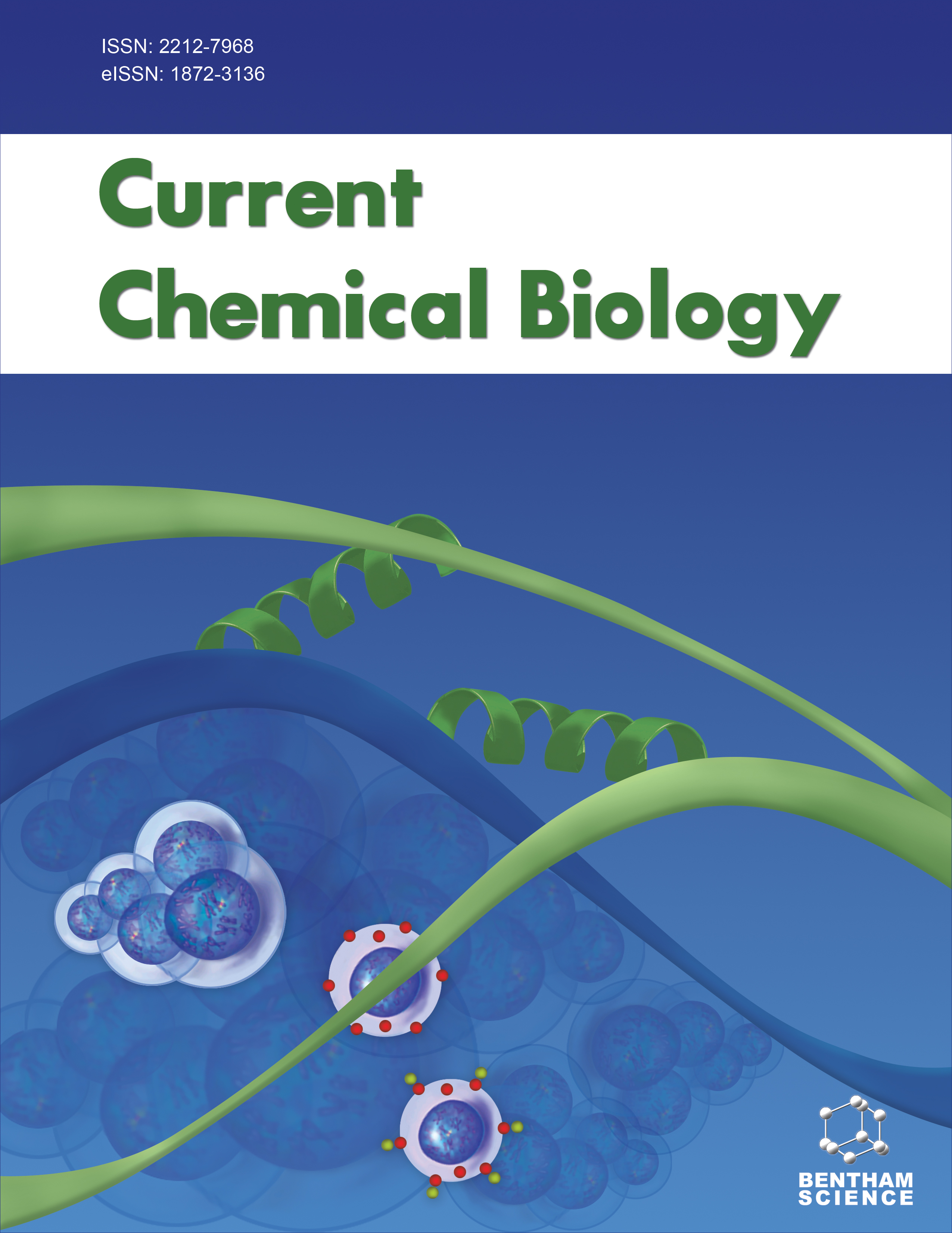- Home
- A-Z Publications
- Current Chemical Biology
- Issue Home
Current Chemical Biology - Current Issue
Volume 18, Issue 4, 2024
-
-
Use of Essential Oils for the Treatment of Fusarium oxysporum f. sp. Albedinis: Chemical Profile, In Vitro Antifungal Activity, and In Silico Investigation by Molecular Docking Study
More LessBackgroundFusarium oxysporum f. sp. Albedinis a telluric fungal pathogen commonly found in soils, is the causal agent of fungal vascular wilt of date palms in Moroccan oases. The infection by the pathogen leads to the death of the date palm after six months to two years, which causes enormous economic and environmental damage.ObjectiveThe framework of this paper is to determine the chemical composition of six Read More
-
-
-
Chemical Profiling, In-Silico Investigation and In Vivo Toxicity Assessment of Lacatomtom (A Psychoactive Mixture) on Selected Indices in Albino Wistar Rats
More LessIntroduction/ObjectiveThe use of lacatomtom (LTT), a psychoactive mixture of tomtom (TT) candies with lacasera (LC) beverage, has recently increased among young Nigerians and Africans. There isn't much scientific study on the constituent and effects of this psychoactive substance.MethodsHerein, LTT was chemically-profiled using GCMS analysis, and the toxicological effects were examined in albino rats. I Read More
-
-
-
Hemisynthesis, Anti-Inflammatory, and In-silico Alpha-Amylase Inhibition of Novel Carlina Oxide Analogs
More LessAuthors: Amina Hammoudi, Amina Tabet Zatla, Imane Rihab Mami, Joëlle Pérard and Mohamed El Amine DibBackgroundNumerous natural products have been successfully developed for clinical use in the treatment of human diseases in almost every therapeutic area.ObjectiveThis work aimed to synthesize some new analogs of carlina oxide by functionalizing the fifth position of the furan by different acyl groups using the Friedel-Crafts acylation approach. The synthetic analogs and carlina oxide were then assessed for their in Read More
-
-
-
Prooxidant Activity of Gallic Acid by Promote Reactive Oxygen Species, Apoptosis and Autophagy in HepG2 Cells In Vitro
More LessIntroductionGallic acid (GA), a natural phenolic acid, has been reported as an antitumor agent in various cancer cells. Although some mechanisms, such as apoptosis, are well known, the details of other mechanisms, such as their pro-oxidant and autophagy activity, are still considerable.MethodsThe pro-oxidative activity and anti-proliferative activity of GA on HEK 293 and HepG2 cells were measured in the a Read More
-
Volumes & issues
Most Read This Month Most Read RSS feed
Article
content/journals/ccb
Journal
10
5
false
en


